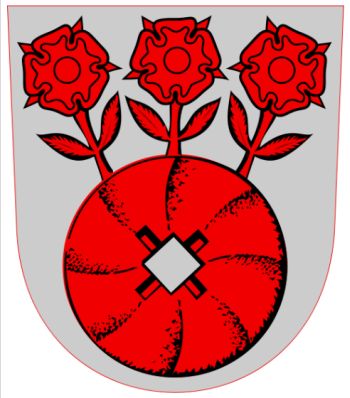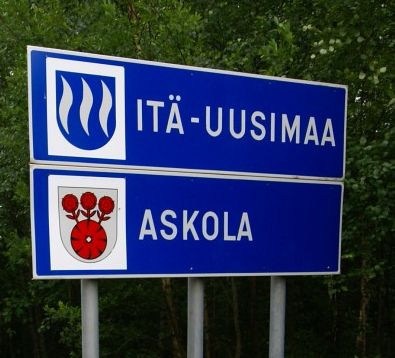Askola: Difference between revisions
Jump to navigation
Jump to search
Knorrepoes (talk | contribs) m (Text replacement - "|Arms of {{PAGENAME}}" to "|Arms (crest) of {{PAGENAME}}") |
Knorrepoes (talk | contribs) m (Text replacement - "====Origin/meaning==== The" to "===Origin/meaning=== The") |
||
| Line 11: | Line 11: | ||
Hopeakentässä myllynkivi, josta kasvaa kolme ruusua; kaikki punaista. | Hopeakentässä myllynkivi, josta kasvaa kolme ruusua; kaikki punaista. | ||
===Origin/meaning=== | |||
The arms were officially granted on November 14, 1956. | The arms were officially granted on November 14, 1956. | ||
Revision as of 16:02, 22 June 2017
ASKOLA
Region : Uusimaa (2009-2011 Itä-Uusimaa)
Former province : 1997-2009 Etelä-Suomi, until 1997 Uusimaa
Official blazon
Hopeakentässä myllynkivi, josta kasvaa kolme ruusua; kaikki punaista.
Origin/meaning
The arms were officially granted on November 14, 1956.
The millstone is taken as a symbol for the many former mills in the area as well as for the local bread, milled in the mills. The roses are taken as a symbol for the poet Johannes Linnankoski, whose most famous poem was about roses.
| The arms on a road sign |
Contact and Support
Partners:
Your logo here ?
Contact us
© since 1995, Heraldry of the World, Ralf Hartemink 
Index of the site
Literature : Pirinen, K. Local coats of arms in Finland (Suomen kunnallisvaakunat), Vantaa, 1982, 216 p.











